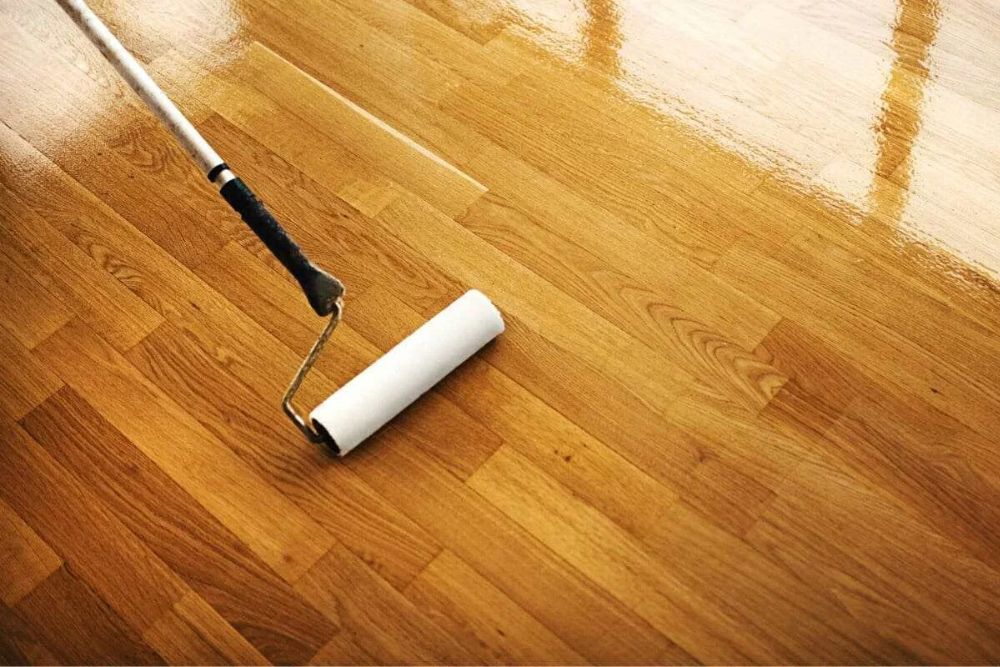
- admin
- Comments 0
- 06 Feb 2025
Engineered wood floors cleaning: People often choose engineered wood floors over standard hardwood floors because they look better, last longer, and don’t get damaged by water. But to keep them looking good and making them last longer, you need to clean them the right way. There are specific steps in this guide that will show you how to clean engineered wood floors so that they stay in great shape for years to come.
How to Clean Engineered Wood Floors?
1. Understanding Engineered Wood Floors
It’s important to know what engineered wood floors are and how they’re different from solid oak before you start cleaning them. A real hardwood veneer is glued on top of layers of plywood or high-density fiberboard (HDF) to make engineered wood.
Explanation: The look of hardwood floors is yours with engineered wood, but with added stability against changes in the environment. Solid hardwood can alter its shape with humidity, but engineered wood stays more steady. Ideal for kitchens or basements with temperature shifts or extra dampness. Yet, the top layer, a hardwood veneer, could get scratches, dents, or stains. It needs careful cleaning to stay nice-looking. It’s vital to know about engineered wood floors to pick the right ways and things for cleaning.
2. Daily Cleaning Routine
Maintaining the beauty of your engineered wood floors starts with a regular cleaning routine. Dust, dirt, and debris can accumulate on the surface, potentially causing scratches or dulling the finish.
Explanation: Setting up a daily cleaning schedule is the first thing you should do to take care of your engineered wood floors. Regularly sweep the floor with a soft-bristle broom or a cloth dust mop to get rid of dust and dirt that can scratch the surface. When vacuuming with a hard floor tool (but not a beater bar), it may be easier to pick up dirt in places with pets or a lot of foot traffic. Do not use a regular broom because it can scratch and push dirt into the cracks. Sweeping or cleaning the floor regularly keeps the shine and finish in good shape and stops dirt from building up. This easy thing you do every day will protect your engineered wood floors from scratches and wear and keep them looking brand new.
3. Weekly and Monthly Deep Cleaning
In addition to daily maintenance, your engineered wood floors will benefit from more thorough cleaning on a weekly or monthly basis, depending on the level of foot traffic in your home.
Explanation: Use a damp (not wet) microfiber mop and a cleaner made just for engineered wood floors to get a better clean. Do not use too much water, as it can seep between the planks and damage the wood layers. Spray the cleaner onto the mop instead of the floor, and make sure you brush in the direction of the wood grain for a smooth finish. Use the wood floor cleaner on a soft cloth and lightly scrub the area to get rid of tough spots or sticky residue. Deep cleaning the floor once a month gets rid of dirt that regular brushing might miss and makes it look new again. If you stick to this routine, you can keep your floors looking nice by stopping dirt and stains from building up.
4. Removing Stains and Spills
Accidents happen, and when they do, it’s important to know how to handle spills and stains promptly to avoid permanent damage to your engineered wood floors.
Explanation: If a spill happens, immediate cleanup is key. This stops moisture from getting into wood layers and causing harm. For liquid spills, get a clean, dry piece of cloth or paper towel. Use it to soak up much of the spill. Don’t rub. This can just make the spill bigger and could damage the finish. For tough or sticky stains, a cloth moistened with a wood floor cleaner can be used. Just lightly wipe the stain. Spills from oil or grease might need a stronger cleaner for engineered wood. Afterward, make sure the area’s dry. Use a dry cloth to get rid of remaining moisture. This stops it from causing problems with the floor. To keep your engineered wood floors looking good and strong, act quickly with spills and stains.
5. Avoiding Common Cleaning Mistakes
While cleaning your engineered wood floors, it’s easy to make mistakes that could potentially damage the surface. Knowing what to avoid is just as important as knowing the right cleaning techniques.
Explanation: A lot of people mess up their engineered wood floors by using too much water or a mop that is too wet. It’s possible for too much water to get through the seams between the planks and split, warp, or even grow mold. Cleaning with strong chemicals like ammonia or bleach is another mistake that should be avoided. These chemicals can damage the finish and make it shine less. Even though wax-based cleaners are made for different types of floors, you should also stay away from them because they can leave a film on the floor that makes it slippery and hard to clean. Another bad thing to do is use a steam cleaner. The high heat and wetness can damage the wood layers. Lastly, rough tools like cleaning pads or brushes with stiff bristles can scratch the surface. If you don’t do these usual things, your engineered wood floors will stay in great shape.
6. Long-Term Maintenance Tips
Not only should you clean your engineered wood floors regularly, but you should also do a few other things to keep them looking great over time.
Explanation: Keep dirt and wetness off your floors – put doormats at entrances. To avoid scratches, place pads under tables, chairs, and big furniture. Watch your shoes! Heels or hard-soled ones can harm your floors. Make sure the inside moisture stays between 30% and 50% – it stops the wood from changing too much. If your floors look worn, think about professional refinishing. Be aware though, engineered wood has restrictions on how often it can be sanded and refinished due to veneer thickness. Keeping your floors neat and tidy, extends their life and keeps them looking great.
Easy Steps to Clean Engineered Wood Floors Carefully and Quickly
It doesn’t have to take a long time to clean hard wood floors. By doing these simple things, you can keep your floors looking great and making them last for a long time with little work.
1. Gather Your Cleaning Supplies
- Microfiber mop
- Soft-bristle broom or vacuum with a hard floor attachment
- Cleaner specifically formulated for engineered wood floors
- Soft cloths or paper towels
Quick Tip: Having your supplies ready before you start makes the cleaning process faster and more efficient.
2. Sweep or Vacuum Regularly
- Use a soft-bristle broom or a vacuum without a beater bar to remove dust and dirt daily.
- Focus on high-traffic areas to prevent scratches.
Quick Tip: Regular sweeping takes just a few minutes but prevents dirt buildup that can damage the floor over time.
3. Damp Mop Weekly
- Lightly dampen a microfiber mop with an engineered wood floor cleaner.
- Mop in the direction of the wood grain to avoid streaks.
- Avoid using excessive water to protect the floor’s layers.
Quick Tip: Spray the cleaner on the mop, not directly on the floor, to control the amount of moisture.
4. Spot Clean Spills Immediately
- Blot spills with a dry cloth to absorb liquid quickly.
- Use a damp cloth with cleaner for sticky or stubborn spots.
Quick Tip: Acting quickly on spills prevents stains and moisture damage.
5. Avoid Common Mistakes
- Skip the wet mop, steam cleaner, and harsh chemicals.
- Avoid abrasive tools that can scratch the surface.
Quick Tip: Stick to products and methods designed specifically for engineered wood to keep your floors in top condition.
6. Long-Term Protection
- Use doormats, furniture pads, and keep humidity levels stable.
- Refinish the floors professionally if necessary.
Quick Tip: Small protective measures now can save you time and money on repairs later.
Conclusion
Engineered wood floors are often preferred over standard hardwood floors due to their aesthetic appeal, durability, and resistance to water damage. However, proper cleaning is crucial for their longevity. To maintain their beauty, follow a daily cleaning routine, sweeping the floor with a soft-bristle broom or cloth dust mop. A weekly or monthly deep cleaning, using a microfiber mop and a cleaner specifically designed for engineered wood floors, is recommended. If spills or stains occur, act immediately to prevent damage. Regularly sweeping and vacuuming can help maintain the shine and finish of your engineered wood floors.
Avoid common cleaning mistakes when cleaning engineered wood floors, such as using too much water, using strong chemicals, using wax-based cleaners, using steam cleaners, and using rough tools. Regular cleaning and long-term maintenance are essential for maintaining the floor’s appearance. Keep dirt and wetness off, place pads under furniture, and watch shoes for potential damage. Keep the inside moisture between 30% and 50% to prevent wood changes. To clean, gather cleaning supplies, sweep or vacuum regularly, dampen the mop weekly, and spot clean spills immediately. Avoid common mistakes, stick to products designed specifically for engineered wood, and use protective measures to save time and money on repairs.


